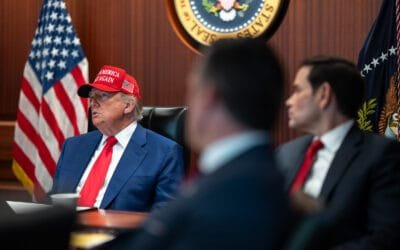“An almost hysterical antagonism toward the gold standard is one issue which unites statists of all persuasions. They seem to sense, perhaps more clearly and subtly than many consistent defenders of laissez-faire, that gold and economic freedom are inseparable, that the gold standard is an instrument of laissez-faire and that each implies and requires the other. In the absence of the gold standard, there is no way to protect savings from confiscation through inflation. There is no safe store of value. If there were, the government would have to make its holding illegal, as was done in the case of gold. The financial policy of the welfare state requires that there be no way for the owners of wealth to protect themselves.
“This is the shabby secret of the welfare statists’ tirades against gold. Deficit spending is simply a scheme for the confiscation of wealth. Gold stands in the way of this insidious process. It stands as a protector of property rights. If one grasps this, one has no difficulty in understanding the statists’ antagonism toward the gold standard.”
Alan Greenspan
Quoted in Ayn Rand’s “Capitalism The Unknown Ideal” (1966)
If only we had someone who could speak this forcefully to the policy-makers in the world’s financial institutions! Unfortunately, Greenspan has grown increasingly guarded since he wrote the essay excerpted above. These days he is hesitant to voice any firm opinion at all.
| During a previous testimony before congress, many expected Greenspan to explain why the economy is growing so strongly while inflation remains so low. Greenspan, who clearly must know better, was unable to provide a clear answer. |
During a previous testimony before congress, many expected Greenspan to explain why the economy is growing so strongly while inflation remains so low.
Greenspan, who clearly must know better, was unable to provide a clear answer.
Instead, he listed numerous factors (i.e., technological progress, productivity gains, reduced inflationary expectations, new investment in capacity, falling oil prices, falling import prices, and workers’ willingness to work longer hours), which he claims have kept inflation temporarily low, but which he would not trust to stave off inflation forever.
The reality is that the aforementioned “deflationary factors” are actually benefits OF falling inflation. So Greenspan essentially testified that the cause of today’s low inflation is — low inflation. Of course, this circular argument was phrased in such an eloquent manner as to obscure its complete illogic from 99% of the population. But if this framework is truly what Greenspan uses to guide his monetary policy, then the U.S. economy would be in horrendous shape today.
The bond market took a fall after Greenspan’s testimony. Journalists chalked it up to a rising belief that the Fed’s bias is now towards reversing earlier interest rate eases. But I believe the problem is far more basic: the Fed currently has no clear framework for determining interest rate policy. As such, markets are left to cope with the uncertainty. Despite low inflation, and all indications from steady gold prices that this is set to continue, the Fed continues to treat economic growth and low unemployment as a threat, repeatedly suggesting that interest rates may be hiked in response.
| Somewhere deep below his polished political exterior, there’s an economist who knows the value of the gold standard. I suspect that Mr. Greenspan knows a lot more about good economics than he lets the public or his colleagues at the Federal Reserve and Treasury know. |
Once in a while, we get a glimmer of Greenspan’s early days of ardent economic principle. For example, he stated that “at the end of the day, the level of inflation is a monetary phenomenon.” He also said that “the price of gold-like a lot of commodity prices, and perhaps better than most, [has] been useful in my judgment in trying to get some sense what inflationary pressures have evolved in this country”. Also, to the House Banking Committee Greenspan testified that “Monetary policy certainly has played a role in constraining the rise in the general level of prices and dampening inflation expectations over the 1980’s and 1990’s. But our current discretionary monetary policy has difficulty anchoring the price level over time in the same way that the gold standard did in the last century.”
Somewhere deep below his polished political exterior, there’s an economist who knows the value of the gold standard. I suspect that Mr. Greenspan knows a lot more about good economics than he lets the public or his colleagues at the Federal Reserve and Treasury know. He jokes that the purpose of his vague statements is to allow the press to draw inconsistent and “diametrically opposite interpretations”. My guess is that Greenspan enjoys his complex obscurity; since no one really understands how he’s keeping inflation low, he can convince people in government that he alone has the brains to keep things steady. While this may be fun for him, it leaves no clear policy legacy for future Fed Chairmen.
I’d like to see the return of Alan Greenspan, circa 1966. This Greenspan would take strong, and perhaps politically incorrect policy positions. Maybe he’ll write a tell-all book after he retires, saying everything he’s kept bottled up inside for the past 12 years. I would greatly enjoy Greenspan’s rediscovered candor instead of suffering under the policy miscues of his replacement.









